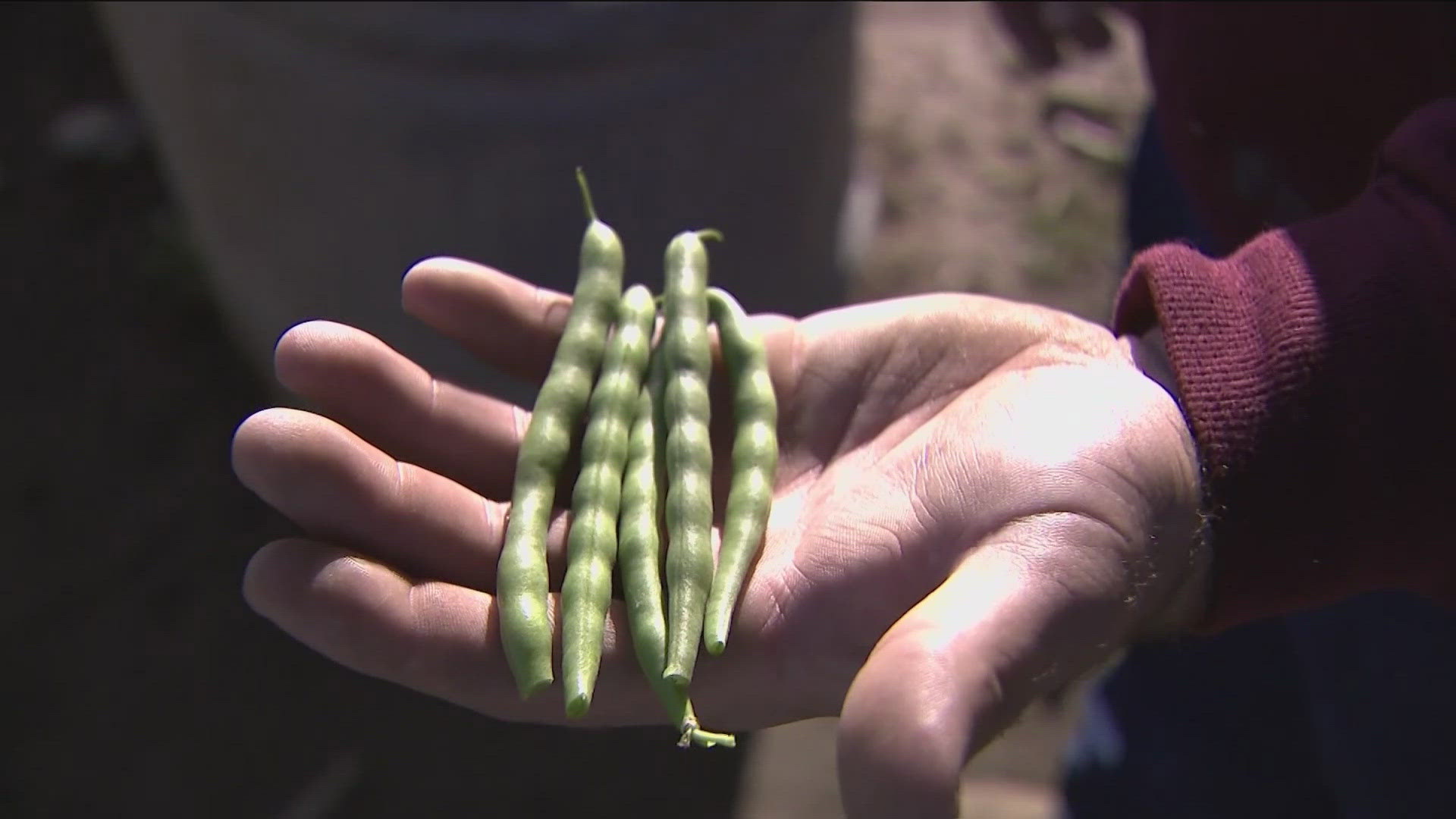EMMETT, Idaho — The future of farming in America, and here in Idaho, may be at a crossroads.
The average age of a farmer continues to rise and while young people try to break into the industry, skyrocketing land prices and high input costs make getting that start a challenging possibility.
Terry Walton always wanted to be a farmer.
"We started farming 14 years ago," Walton said. "I always wanted to, it's just hard to get into it. I grew up with my dad farming and my grandpa farming, but their operations weren't big enough for another mouth to feed."
Justin Roberts also always wanted to farm.
"I've been farming with my family, since the day I was born," Roberts said.
Walton's grandfather suffered heat stroke, so using an FSA loan, he took over the farm starting with 90 acres.
"We've come a long ways from that," Walton said.
Walton kept his welding job in the winter and farmed in the summer.
"I did that for three years, until we could save up enough money to start buying equipment," he said.
Roberts has a similar story.
His grandpa started farming and ranching, his dad took over, and he was next in line.
"It's definitely not easy," Roberts said. "Even for people who've got generation farms that they can go step into, it's still hard to, you know, raise a family."
Like Walton, Roberts does more than tend to his crops.
"My family raises seed crops, peas, beans, alfalfa, seed, raise some wheat," he said. "They also run cattle and then I work another full-time job at a feedlot assistant manager, so that's what pays the bills."
Both said the cost of land and equipment makes it nearly impossible for others to follow in their footsteps.
"Obviously, it's hard with the increases of land and input costs, and you're not getting much in return, and sometimes you don't even make enough to pay any of your bills," Roberts said.
"If we didn't get started when we did, I really struggle to see how we would be able to do it now, because we bought this property 12 years ago for 5,500 an acre, and the neighbors are selling for 15,000 and 17,000 an acre," Walton said.
These reasons are a piece of the puzzle behind why there's only a small number of farmers starting when their they're young.
This year, the USDA released the census of agriculture.
Conducted every five years, it tracks our nations farms and ranches and the people who run them. It gives us an outlook on the future of farming.
When you look at how the farming population is aging, farmers 65 and older make up 40% of all farmers and the average age of a US farmer is 58 years old.
There was a 7% increase in farmers under 44 and the largest jump came from the youngest producers under 25 years old.
Though, it's not enough if you put that into perspective. There are just 832 Idaho farmers under 25, which is about 1.9% of farmers.
With an increasing number of farmers who are aging, it brings concern.
"Trying to find the stuff to get going and get started is difficult now," Roberts said. "Even if there is something for sale, you can't afford it. Pretty much, most of the land is getting bought up by investors. Those are the people who can afford it, the young farmers can't afford it anymore and I think that's what makes it difficult for a lot of the young people."
Roberts and Walton say it's still doable.
They've learned they can't farm like their grandparents used to.
Instead of growing wheat, potatoes, and corn, they are finding that the money is in specialty crops.
"We focus a lot on our vegetable seed production, which lettuce seed and carrot seed and onion seed, turnip seed, many others," Walton said.
"Some of those niches are a great way to make it work, but they're also a very high risk most of the time," Roberts said.
They encourage those who don't have family in the farming industry to find people who need workers.
"Anybody else that's trying to step in, it's hard, you know, the best thing for them to try to do is maybe find somebody they can try to take over their operation and their business and move in that experience will help them get going," Walton said.
As the industry ages, the challenge of attracting young farmers is growing. There are some resources out there for new farmers, but both are still concerned about filling the gap because costs remain high and the payout isn't large.
"Hopefully come up with a solution to keep these farms and ranches, because there is a lot of people that still want to make that their lifestyle," Roberts said.

